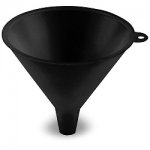Hi All,
Moved into my house a few weeks ago, which has a 14,500 gallon pool. The first week I moved in, I got a call from the previous pool guy, who was extremely obnoxious and was charging over 200 a month to maintain the pool, and I balked at the price (probably the going price, but I was just stressed at the time with all the expenses mounting). He then offered a pool school to me for an hour, at $275, at which point he would teach me everything he knows; i told him thats a pretty high hourly rate, anyways, i didnt use his service. Then i found troublefreepool, bought the taylor test kit, and downloaded the poolmath app, and read through the forum. My first readings:
7/5
FC = 18
CC = 6
pH = 7.2
TA = 60
CH = 400
CYA = 110
added baking soda, and borax
today 7/12
FC = 6.5
CC =.5
pH 7.8
TA = 80
CH = 340
CYA = 110
Added recommended liquid bleach (Clorox 6%) right after testing, and yes I know my CYA is very high, but thats because the pool guy was using the chlorine pucks in the automatic chlorine inline feeder (Pentair Rainbow Model 320). It will be very expensive for me to drain the pool even half-way since water is sooo expensive my county.
A couple of questions, which i didnt see answered
1.) Can I add clorox directly to the in-line Chlorine Feeder (Rainbow Model 320) while my filter pump is running? It seems easier to do than add slowly in front of the return? I also have a Catch a kid net over the pool, as i have young ones, and i have to remove it to add bleach...
2.) I have iridescent glass tiles right at the water line, and above, and I see some mineral deposits sitting on them, giving it a white ashy look. I read that I can use a pumice stone to rub it off without scratching the glass tiles. However, this is time-consuming to do, and leaves so much pumice dust in the pool. Is there a chemical that i can use to do this instead, and it is a bit easier? I believe folks in previous posts have cautioned against using abrasives like wet/dry sandpaper or standard tile cleaners that have abrasives as it will lightly scratch your tile creating a haze.
Any recommendations on either of the questions above is very helpful. Thanks again for eveyrones help and teaching me the basics.
Moved into my house a few weeks ago, which has a 14,500 gallon pool. The first week I moved in, I got a call from the previous pool guy, who was extremely obnoxious and was charging over 200 a month to maintain the pool, and I balked at the price (probably the going price, but I was just stressed at the time with all the expenses mounting). He then offered a pool school to me for an hour, at $275, at which point he would teach me everything he knows; i told him thats a pretty high hourly rate, anyways, i didnt use his service. Then i found troublefreepool, bought the taylor test kit, and downloaded the poolmath app, and read through the forum. My first readings:
7/5
FC = 18
CC = 6
pH = 7.2
TA = 60
CH = 400
CYA = 110
added baking soda, and borax
today 7/12
FC = 6.5
CC =.5
pH 7.8
TA = 80
CH = 340
CYA = 110
Added recommended liquid bleach (Clorox 6%) right after testing, and yes I know my CYA is very high, but thats because the pool guy was using the chlorine pucks in the automatic chlorine inline feeder (Pentair Rainbow Model 320). It will be very expensive for me to drain the pool even half-way since water is sooo expensive my county.
A couple of questions, which i didnt see answered
1.) Can I add clorox directly to the in-line Chlorine Feeder (Rainbow Model 320) while my filter pump is running? It seems easier to do than add slowly in front of the return? I also have a Catch a kid net over the pool, as i have young ones, and i have to remove it to add bleach...
2.) I have iridescent glass tiles right at the water line, and above, and I see some mineral deposits sitting on them, giving it a white ashy look. I read that I can use a pumice stone to rub it off without scratching the glass tiles. However, this is time-consuming to do, and leaves so much pumice dust in the pool. Is there a chemical that i can use to do this instead, and it is a bit easier? I believe folks in previous posts have cautioned against using abrasives like wet/dry sandpaper or standard tile cleaners that have abrasives as it will lightly scratch your tile creating a haze.
Any recommendations on either of the questions above is very helpful. Thanks again for eveyrones help and teaching me the basics.


 I would not pour the bleach in the feeder. Pouring slowly near the returns jets is best. You can try a water/muriatic acid ratio mix of about 4/1 on those tiles along with some good scrubbing to see if that clears-up your tiles. Don't forget to update your signature with all of your pool and equipment info, to include which Taylor kit you are using. It will help us later.
I would not pour the bleach in the feeder. Pouring slowly near the returns jets is best. You can try a water/muriatic acid ratio mix of about 4/1 on those tiles along with some good scrubbing to see if that clears-up your tiles. Don't forget to update your signature with all of your pool and equipment info, to include which Taylor kit you are using. It will help us later.